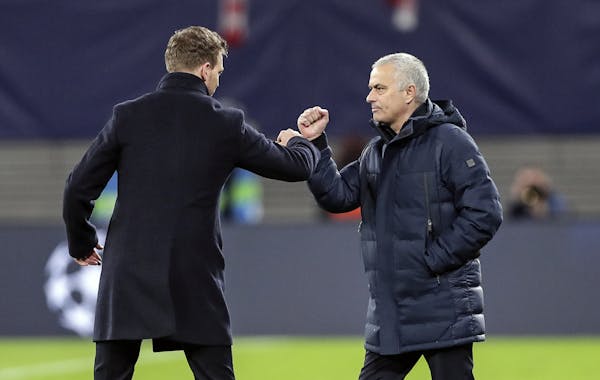Michael Osterholm is a frequent flier, often racking up more than 200,000 miles a year.
But as the number of U.S. coronavirus cases climbs, the director of the Center for Infectious Disease Research and Policy at the University of Minnesota is sticking close to home.
"At this point, I have now ended all my travel," Osterholm said.
He is practicing what he and other public health experts preach: social distancing. This means staying home as much as possible, avoiding large crowds and keeping a 3- to 6-foot distance between you and others when you go out.
Dr. Anthony Fauci, director of the National Institute of Allergy and Infectious Diseases, has recommended social distancing for all Americans ages 60 and up, as well as those with an underlying health condition that puts them at greater risk. Officials have also suggested this practice for everyone living in areas where coronavirus has begun to spread locally.
There's no doubt that social distancing is a bit awkward (avoiding handshakes or even elbow bumps, turning down invitations), disappointing (missing a much-anticipated event or gathering) and isolating (like a snow day that lasts for weeks). But health experts say it is important because it can slow the virus' spread, providing a chance to keep the caseload at a more manageable level for hospitals and care providers.
"Social distancing is the spacing out of people in places in such a way that you greatly reduce the likelihood that an uninfected person will come in contact with an infected person," explained Osterholm. "It's really a very simple concept. It's just about space and time. So, when you have large crowds together in closed spaces, the likelihood that they are all sharing air with each other, both that which we breathe in and breathe out, is markedly increased. This virus is transmitted very easily via the respiratory route."
Social distancing hasn't been widely recommended in Minnesota in years, aside from nursing homes that might restrict visitors when influenza transmissions are high, said Craig Hedberg, a professor who researches foodborne illness and infectious disease outbreaks at the University of Minnesota's School of Public Health.
But culturally, we may have a bit of a head start in the practice of social distancing in Minnesota, where the state's Scandinavian heritage encourages personal space.
As immunologist Kristian Andersen, who is originally from Denmark, tweeted: "All Scandinavians when we saw the social distancing recommendations — 'What do you mean we have to be 3-6 feet apart? That's way too close!' "
We also have a little experience with weather-induced isolation.
"I think in Minnesota, our closest comparison might be the polar vortex last year. That was short-term compared to what we could potentially be facing here," said Carrie Henning-Smith, an assistant professor at the U's School of Public Health who studies isolation. "But still, people got a little tiny taste of what it might be like if you're asked not to leave your house for a period of several days, and if schools closed and workplaces closed."
While social isolation and loneliness have serious health risks, including higher rates of mortality, poor mental health or immune system dysfunction, they develop over a prolonged period, Henning-Smith said.
"I don't think anyone should be alarmed at what the impact of being asked to stay home for a few weeks might be on their mental state. It's not really a prolonged period of isolation and loneliness," she said.
She's more concerned about the "alarming side effect of xenophobia" that accompanies the outbreak.
"I worry about people who are being stigmatized or discriminated against because they are East Asian right now," she said. "I worry that that's going to make isolation and loneliness more pervasive for certain groups."
In places around the country where social distancing is already widely in place, people are posting quarantine cooking videos and sharing advice for how to work from home and actually get work done. Online interactions can be a healthy way to socialize, but they also have the potential to be divisive, Henning-Smith said.
"I just worry a little bit about the impact of people being home alone with their screens and devices, and what that might mean for how we all connect with one another," she said. "I think if people are feeling lonely and isolated and they're stuck at home, I think there are meaningful ways to use technology to connect with one another. Reach out to a friend, reach out to a loved one, check in with one another."
Because the virus has the potential to circulate for weeks to months, Osterholm suggested that Minnesotans be prepared for an extended time of social distancing.
"This is not a Minneapolis blizzard where we get prepared, shelter in place for a couple of days and then we all go back to normal activities. This is a coronavirus winter we're entering. We're really in the first weeks of that," he said.

Want to share info with the Star Tribune? How to do it securely

'Safe recovery sites' would offer syringes, naloxone and more to people using drugs. The plan could be in peril.
New Minnesota GOP leaders seek peace with party's anti-establishment wing

Who is Republican Lisa Demuth, Minnesota's first House speaker of color?

